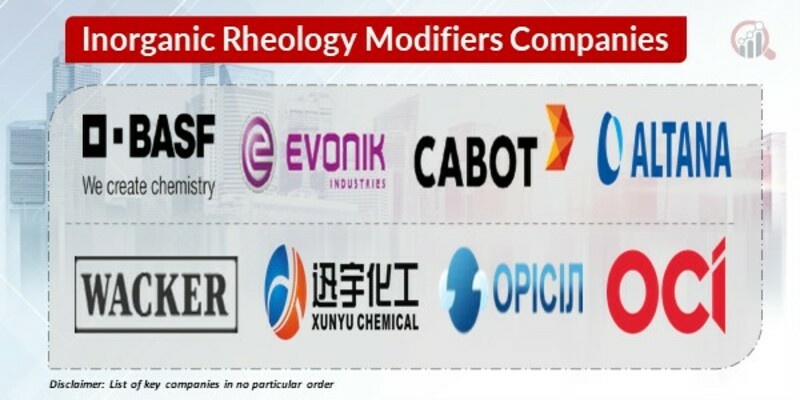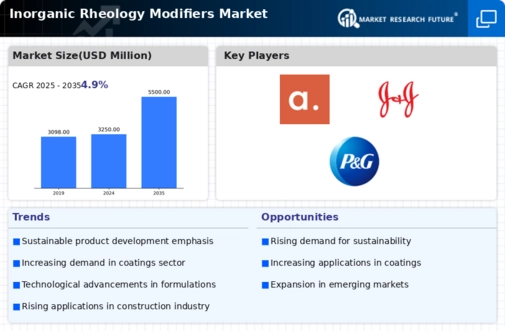Top Industry Leaders in the Inorganic Rheology Modifiers Market
 The global inorganic rheology modifiers market is a dynamic arena where established players grapple with rising competition. Its value lies in the unique ability of these materials to alter the flow properties of fluids, making them essential for diverse industries like paints & coatings, cosmetics, adhesives, and construction.
The global inorganic rheology modifiers market is a dynamic arena where established players grapple with rising competition. Its value lies in the unique ability of these materials to alter the flow properties of fluids, making them essential for diverse industries like paints & coatings, cosmetics, adhesives, and construction.
Major Players and Strategies:
-
-
Product diversification: Expanding into specialty clays, fumed silica with varying functionalities, and sustainable, bio-based options. -
Regional expansion: Targeting high-growth markets like Asia-Pacific and Latin America through acquisitions and partnerships. -
Technological advancements: Investing in research to develop rheology modifiers with enhanced performance and eco-friendly attributes.
-
Factors Influencing Market Share:
-
Product Innovation: Offering rheology modifiers with superior thickening efficiency, thixotropy, and shear thinning properties can secure market leadership. -
Sustainable Solutions: Growing environmental concerns drive demand for bio-based or readily recyclable inorganic rheology modifiers. -
Regional Dynamics: The Asia-Pacific region, with its booming construction and consumer goods sectors, is a key battleground for market share. -
Pricing Strategies: Balancing competitive pricing with maintaining profit margins is crucial, especially in price-sensitive sectors like personal care.
Key Players
- BASF SE (Germany),
- Evonik Industries AG (Germany),
- Cabot Corporation (U.S,),
- ALTANA (Germany),
- Wacker Chemie AG (Germany),
- XUNYU CHEM (China),
- Orisil (Ukraine),
- OCI COMPANY Ltd (South Korea),
- and Tokuyama Corporation (Japan).
Recent Developments :
September 2023: ALTANA launches a new line of rheology modifiers with improved shear stability, targeting the demanding requirements of the oil & gas industry.
October 2023: Orisil secures funding for a greenfield manufacturing facility in Eastern Europe, aiming to capitalize on the growing demand in the region.
November 2023: Wacker Chemie AG partners with a research institute to develop novel rheology modifiers based on nanomaterials, potentially unlocking disruptive market opportunities.
December 2023: The International Rheology Congress brings together industry leaders and academics to discuss advancements in rheology modifier technology and its impact on various applications.









